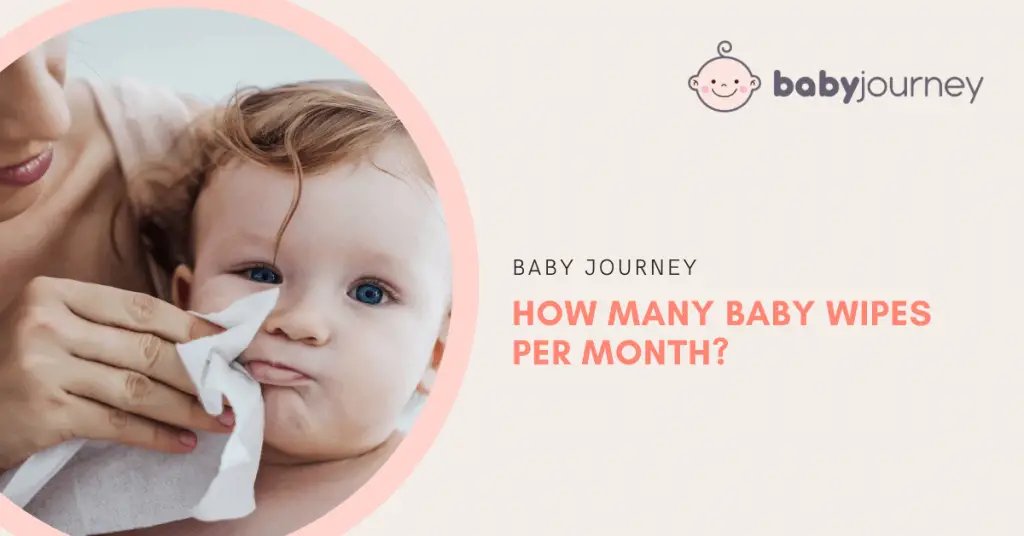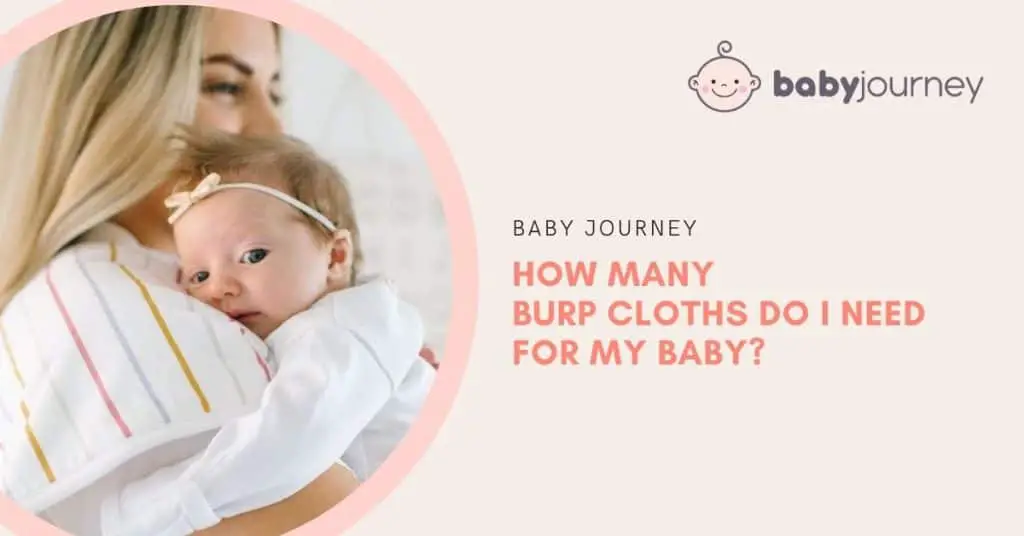Did you know that when tiny teeth start to erupt it is important to begin a brushing routine? You can even start brushing baby gums gently before the tooth is completely visible.
For many parents, the notions of when to start brushing baby’s teeth and how can be confusing. Baby’s teeth are so tiny and few in number that it is easy to forget dental hygiene habits!
In this guide, we hope to clear up a few misconceptions about brushing your child’s teeth and provide you with some helpful tips!
The ABC’s of Brushing Baby Teeth
Cleaning baby teeth…they only have a few, so how hard can it be? Thankfully, brushing your infant’s teeth isn’t too difficult. You just have to establish a good routine right from the start.
When to Start Brushing Baby’s Teeth?
Most infants get their first tooth between six months and twelve months. [1] For most, it is one of their 11 month milestones, though some children can have a tooth erupt as early as four months.
Still, it isn’t uncommon for an 11 month old baby or even a one-year-old child to not have any teeth. You will probably be able to tell when your child is teething. After a few weeks to months, you should see the lower front teeth erupt first.
So when do you start brushing baby teeth? As soon as you see that first pearly white beginning to poke through the gums! Some parents even start earlier by massaging their child’s gums with a washcloth or their finger. Though this isn’t technically brushing baby teeth.
However, it is easy to know when to start brushing baby gums. The answer? It is never too early!
You don’t really want to start any later than right after the first tooth eruption. It is important not only for your child to have clean and strong teeth but also for them to get into a dental routine.
Infant tooth decay can play a role in nutrition and speech development. Not to mention that if a baby tooth is so decayed that it falls out before an adult tooth is ready, the unoccupied space can lead to dental crowding and crooked teeth.
This is why parents need to know when to start brushing baby teeth, and that is as soon as you see them!
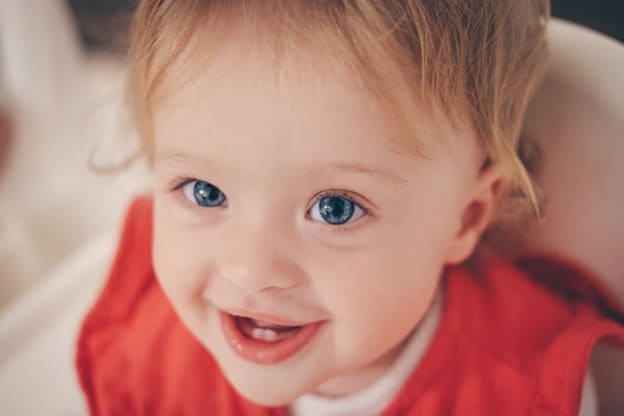
Types of Baby Tooth Brushes
When it comes to babies and brushing teeth, what should you use? Pediatric dentists advise brushing gums with a washcloth. [2] You could also try a specially formulated tooth wipe. This can happen even before they get their first tooth. Brushing gums helps to remove bacteria.
Then, when you see teeth popping through you can transition to a toothbrush. There are two options for ababy’s first toothbrush.

A silicone finger brush is more familiar to children.
Many parents begin brushing infant teeth with a silicone finger brush. An infant finger toothbrush allows parents to feel more comfortable navigating their baby’s mouth and can resemble a pacifier or bottle nipple for the child.
Alternatively, you can use a baby-sized soft bristle toothbrush. Grabease’s double-sided baby toothbrush is a popular choice among many parents.

A petite baby-sized pretzel.
Don’t brush baby teeth whenever you remember, but instead create a schedule. A good dental routine at an early age can set them up with great oral hygiene habits for life.
Much like adults, baby tooth care should occur after eating and before bedtime. You don’t need to break out the baby toothbrush and toothpaste following every meal, but certainly after breakfast and dinner. It also doesn’t hurt to wipe down their gums after they eat with a washcloth or a finger brush for babies.
Remember, you should never let your baby go to bed with a bottle. Aside from other risks like choking, prolonged exposure to the sugars in the milk could lead to tooth decay.
Using Toothpaste for Babies
Questioning how to clean baby teeth if you don’t know whether or not to use toothpaste? Don’t worry! We have an answer.
It is really up to parents when to use toothpaste for baby, but pediatric dentists recommend you don’t start with toothpaste until they have at least a few teeth protruding through their gums. Before this, you can clean a baby mouth with a wet toothbrush or finger brush.
If you need an exact answer on when can babies use toothpaste, you may be disappointed. Previously fluoride was not recommended for children under two because of the danger of small children ingesting too much.
Then, the American Academy of Pediatrics recommended that children of all ages can have fluoride as long as it is used in minimal amounts and under adult supervision. [3] Minimal amount means a rice-grain-sized squeeze of toothpaste until they are three years old, at which time you can transition to a pea-sized amount.
There is baby toothpaste without fluoride, or you can use water only. When your child’s dentist advises it you can begin using fluoride toothpaste.
A great fluoride-free infant toothpaste is Tom’s of Maine Toddler Training Toothpaste, it has a mild fruit flavor and no artificial flavors or preservatives.

Pay attention to the ingredients, searching for all-natural if possible, like this Tom’s of Maine toothpaste.
A fluoride option is Orajel PAW Patrol Anti-cavity Fluoride Toothpaste. It has a fun flavor, characters kids will love to help encourage brushing, and great cavity protection.
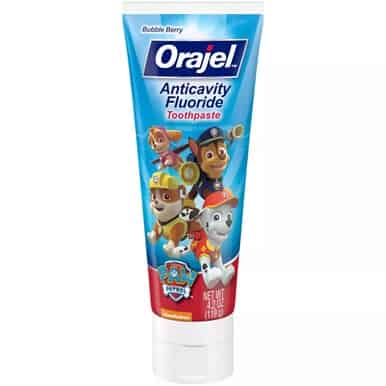
Don’t stress too much about how to brush infant teeth and what toothbrush or toothpaste to use; your child’s dentist or doctor should be able to guide you.
How to Clean Baby Teeth
You know when to brush baby’s teeth, let’s break down how to brush baby teeth.
First, relax, you’ve got this! Then lay your baby down; this way their head is supported and they are more comfortable. Use one hand to hold their chin or hold their cheeks and lips out of the way while the other hand gently brushes their teeth and gums.
Brush the front, back, and sides of their teeth and gums. Make sure to try and get into the grooves and along the gum line. Sometimes singing them a song or excitedly telling them what you are doing can help. Occasionally you may need another pair of hands to help hold and console your child.
The more you brush your baby’s teeth the more comfortable they should become with the process. As they get older you can allow them to hold the toothbrush and explore their mouth with it. Next, instruct them how to brush, guiding their hand and showing them with your toothbrush.
Even if your child wants to try brushing their teeth make sure that you perform a complete brushing after they have had their turn.
Also read: Tips for Cleaning Baby Ears
What if My Baby Doesn’t Like to Brush Teeth?
It is normal for infants not to like having their teeth brushed. The bristles can feel tickly and odd against their tongue and gums. Try these tips.
- Start at a young age with a washcloth
- Use a silicone finger brush to familiarize them with the feeling
- Make sure you are using a soft-bristled brush
- Use a brush and toothpaste with fun characters or flavors
- Sing them a song, distract them with a book, or make up a game
- Ask for help from another adult to hold them and comfort them
Brushing will get easier the more you do it. Even if your child is screaming and making a huge fuss about brushing his or her teeth, remember to relax – your little one can pick up on your emotions!
Choosing Your Baby’s First Toothbrush
Thankfully there are many baby and toddler toothbrushes available on the market. This gives you lots of options when trying to find the right one! Look for:
- Soft bristles designed for children
- A small brush head sized for infant’s mouths
- Chemical-free, specifically BPA and phthalate-free
- Fun colors and characters can make brushing teeth more fun
What About Brushing Baby’s Gums and Tongue?
Teeth aren’t the only things in your baby’s mouth. When brushing, be sure to gently move the toothbrush along the gum line. Infants and children are prone to gingivitis just like adults.
You also want to take care of your little one’s tongue. Some parents may notice a white tongue on baby. The white coating on a baby tongue can be the result of a few things. Sometimes it is a build-up of yeast, called thrush. [4] This needs to be seen by a medical professional.
Other times white stuff on baby tongue is simply a build-up of milk. This is common in young infants who breastfeed or bottle-fed. How to clean a baby tongue is easy!
Gently rub their tongue in a circular motion. You could use their toothbrush, but this may cause an uncomfortable sensation for your child. Instead, use a silicone finger brush or a washcloth with some warm water.
FAQs about Baby’s Dental Care
Do I need to brush my baby’s first teeth?
Yes! You can even begin brushing your child’s gums before teeth erupt. Because infant’s teeth are prone to decay just like adult teeth be sure to brush them regularly as soon as they appear.
Do babies need to spit out toothpaste?
In general, children and babies should not swallow toothpaste. However, because most infant toothpaste is fluoride-free it should not hurt them if they swallow it. Still, teaching them to spit out the toothpaste is good practice for the future.
Should I clean my newborn’s mouth?
You don’t have to clean your newborn’s mouth, but some pediatric dentists recommend it. Gently wiping their gums, tongue, and cheeks with a warm washcloth can help remove bacteria.
What happens if you don’t brush your toddler’s teeth?
Toddler’s teeth are susceptible to decay and gingivitis. Failing to brush them could result in cavities or the tooth having to be removed. If the tooth is removed too early the gap could cause issues for their current baby teeth and adult teeth.
How can I get the plaque off my baby’s teeth?
Plaque can be removed with a toothbrush, a silicone finger brush, or a dampened washcloth. Brush regularly but not aggressively. If you are still concerned about their teeth you should set up an appointment with your dentist.
Best of Luck Brushing Itty Bitty Baby Teeth!
Hopefully, we have cleared up a few misconceptions and prepared you to take great care of your little one’s teeth! Remember, it is never too early to start oral hygiene habits, even if you don’t see teeth yet.
Let us know in the comments if you have any more questions and happy brushing!
—
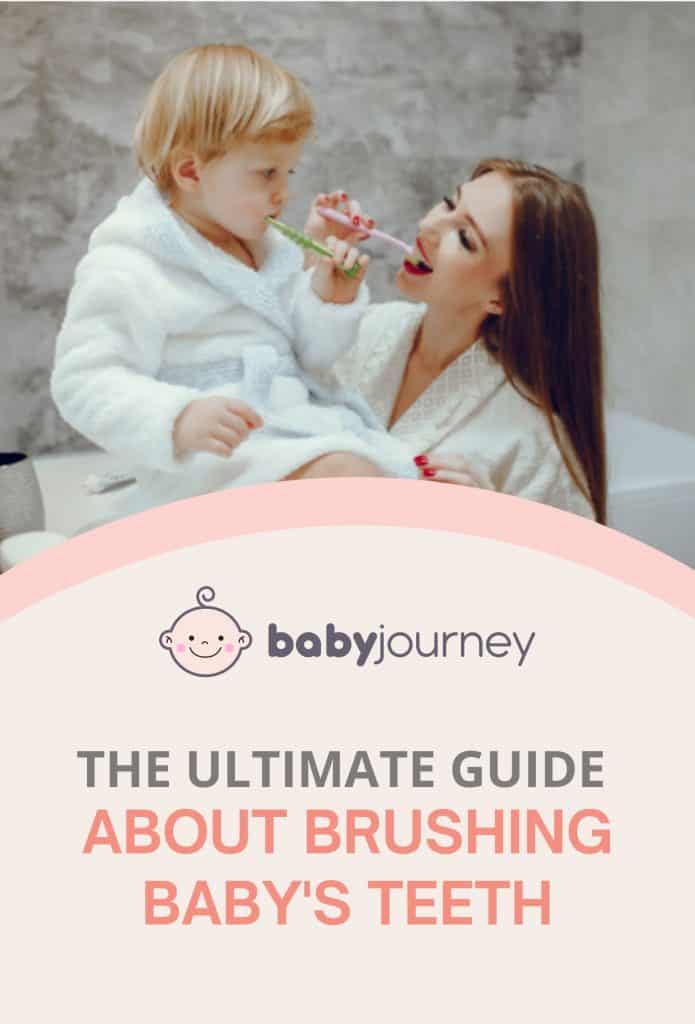
Last update on 2024-04-24 / Affiliate links / Images from Amazon Product Advertising API


